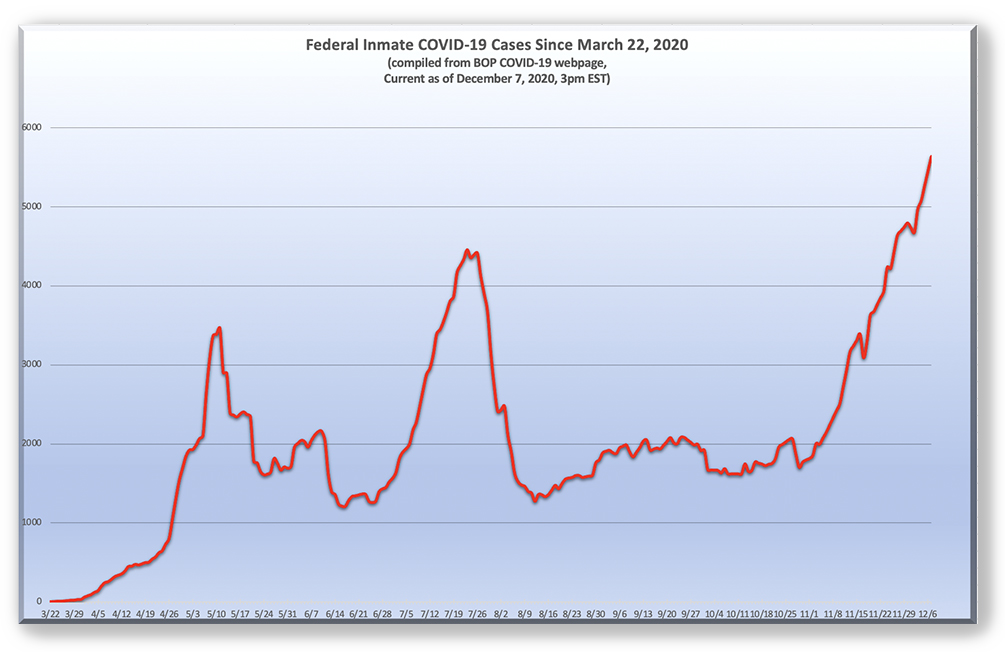We post news and comment on federal criminal justice issues, focused primarily on trial and post-conviction matters, legislative initiatives, and sentencing issues.
Today, a little early Halloween…

TREAT: SENATE BILL AIMED AT HELPING PREGNANT PRISONERS
 Not that introduction of a bill this late in the Congressional season is much more than symbolism, but legislation introduced a few weeks ago by Sens Amy Klobuchar (D-MN) and Susan Collins R-ME) aims to improve care in federal prisons for pregnant and postpartum women and their babies.
Not that introduction of a bill this late in the Congressional season is much more than symbolism, but legislation introduced a few weeks ago by Sens Amy Klobuchar (D-MN) and Susan Collins R-ME) aims to improve care in federal prisons for pregnant and postpartum women and their babies.
The Protecting the Health and Wellness of Babies and Pregnant Women in Custody Act (S.5027) would establish care standards for federal facilities across the country, requiring access to medical and mental health services, as well as education about parental rights and lactation.
The act would restrict when pregnant women can be placed in restrictive housing, ban the Bureau of Prisons and U.S. Marshal Service from placing pregnant women in solitary confinement during the third trimester, and require the BOP to evaluate pregnant women to determine if their pregnancy is high-risk.
Companion legislation in the House was introduced by Reps Karen Bass (D-CA) and Guy Reschenthaler (R-PA).
Sadly, the likelihood that this bill will be considered before the 117th Congress expires on January 2, 2023, is remote.
Gov’t Executive, Senate Bill Aims to Improve Care for Pregnant Women and Babies in Federal Prisons (October 18, 2022)
S. 5027, Protecting the Health and Wellness of Babies and Pregnant Women in Custody Act
 TRICK: IF AT FIRST YOU DON’T SUCCEED…
TRICK: IF AT FIRST YOU DON’T SUCCEED…
 After Dan Kordash got caught at the airport by Customs and Border Protection officers after declaring he was carrying $12,000 in currency that turned out to be more like $33,000 (money which he forfeited), he was detained and questioned by CBP on at least two subsequent occasions. What’s worse, CBP officers told Dan that because of the money incident, he could count on always getting the third degree when he passed through the airport.
After Dan Kordash got caught at the airport by Customs and Border Protection officers after declaring he was carrying $12,000 in currency that turned out to be more like $33,000 (money which he forfeited), he was detained and questioned by CBP on at least two subsequent occasions. What’s worse, CBP officers told Dan that because of the money incident, he could count on always getting the third degree when he passed through the airport.
Dan filed Bivens claims against the CBP officers who detained him. The district court found that the officers had qualified immunity and dismissed the complaint. Not to be deterred, Dan then filed a Federal Tort Claims Act complaint for false imprisonment, battery, assault, intentional infliction of emotional distress, and negligence. The district court dismissed the new complaint as well for failure to state a claim, and Kordash appealed.
Last week, the 11th Circuit upheld the FTCA dismissal, holding that the doctrine of collateral estoppel meant that the Bivens suit determination that the officers acted lawfully in furtherance of federal policy should apply to the FTCA suit as well.
The 11th held that the issue in the FTCA case – whether the officers’ acts had a “nexus” with furthering federal policy and complied with federal law – was identical to the issue in the Bivens action. “In the Bivens action,” the Circuit said, “the district court determined for each incident when Kordash or Nilsen were stopped whether the officers acted within their discretionary authority and whether the detentions complied with federal law. Here, the same legal inquiries govern the application of the Supremacy Clause as a bar to liability for claims arising out of these incidents under the Federal Tort Claims Act.”
Because the issue met the test for issue preclusion, “Kordash is barred from relitigating these issues under the doctrine of collateral estoppel.”
Kordash v. United States, Case No. 21-12151, 2022 U.S.App. LEXIS 29420 (11th Cir., Oct. 21, 2022)

TREAT: MINNESOTA DRUG SALE STATUTES OVERBROAD
 The 8th Circuit ruled last week that because Minnesota’s definitions of “narcotic drug” and cocaine“ include drugs that the federal controlled-substance schedules do not, convictions under those statutes are not predicate “serious drug offense” under the Armed Career Criminal Act.
The 8th Circuit ruled last week that because Minnesota’s definitions of “narcotic drug” and cocaine“ include drugs that the federal controlled-substance schedules do not, convictions under those statutes are not predicate “serious drug offense” under the Armed Career Criminal Act.
While the defendant was still convicted of a felon-in-possession count under 18 U.S.C. § 922(g)(1), his sentence exposure fell from 15 years to life all the way down to zero to 10 years.
United States v. Owen, Case No. 21-3870, 2022 U.S.App. LEXIS 28979 (8th Cir., Oct. 19, 2022)
– Thomas L. Root



 Perhaps the next BOP director will be candid enough to own what his agency has done or not done with its authority. (See flying pig).
Perhaps the next BOP director will be candid enough to own what his agency has done or not done with its authority. (See flying pig).











